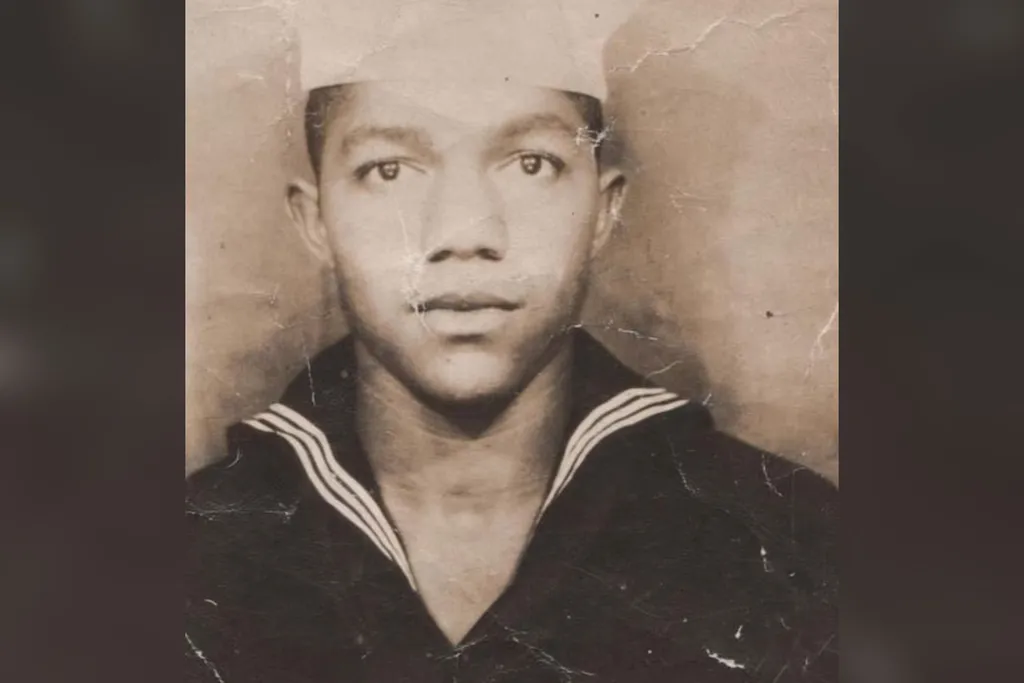A Young Sailor's Remains Return Home 84 Years After He Was Killed at Pearl Harbor
A Young Sailor’s Remains Return Home 84 Years After He Was Killed at Pearl Harbor
Neil Frye was 20 when Japan launched its surprise attack on December 7, 1941. He has been laid to rest with full military honors in his home state of North Carolina
Neil Frye was just 20 years old when he was killed in the Japanese attack on Pearl Harbor.
Defense POW/MIA Accounting Agency
An American sailor has been laid to rest with full military honors in his home state 84 years after he was killed at Pearl Harbor.
Neil Frye was only 20 when Japan launched a surprise attack on Pearl Harbor, the United States’ naval base on the Hawaiian island of Oahu, on December 7, 1941. Frye was serving as a mess attendant third class aboard the USS West Virginia, which was among the 19 U.S. warships damaged or destroyed on the “date which will live in infamy.”
The USS West Virginia, also known as “Wee Vee,” was hit by at least seven torpedoes and two bombs during the attack, according to the Naval History and Heritage Command. Sailors prevented the ship from capsizing, but the vessel ultimately sank to the bottom of the harbor. Of the roughly 1,200 servicemembers working on the USS West Virginia, 106 were killed in the attack.
The ship was later salvaged and temporarily repaired at the Pearl Harbor Navy Yard. In 1943, the USS West Virginia sailed north to the Puget Sound Navy Yard for final repairs and modernization. The vessel returned to service in the Pacific in 1944.
But for decades, Frye’s remains remained unidentified. He had been buried alongside other unidentified servicemen from the USS West Virginia in the National Memorial Cemetery of the Pacific in Honolulu, also known as the “Punchbowl.”
In 2017, officials with the Defense POW/MIA Accounting Agency disinterred the remains of 35 unknown sailors and transported them to the agency’s laboratory. There, researchers carefully analyzed the remains using mitochondrial DNA, dental records and other anthropological techniques.
Experts positively identified Frye’s remains in September 2024. On April 3—which would have been Frye’s 104th birthday, per WCNC’s Nathaniel Puente—he was buried in his home state of North Carolina at Sandhills State Veterans Cemetery.Frye was posthumously awarded the Purple Heart, Combat Action Ribbon, American Defense Service Medal and the Bronze Star Asiatic-Pacific Campaign Medal, as the Fayetteville Observer’s Rachael Riley reports. A rosette has also been placed next to his name on the “Courts of the Missing” at the Punchbowl’s Honolulu Memorial to indicate that he has now been accounted for.
Just one of Frye’s nine siblings is still alive: his youngest sister, Mary Frye McCrimmon. She was only 3 years old when Frye enlisted in the Navy in 1940. Now 87, McCrimmon says her brother’s identification and burial has given the family some closure.
“I was more happy than sad because I knew that they had found him,” McCrimmon tells WUNC’s Jay Price. “I knew where he was. We didn’t have to wonder.”
The USS West Virginia was one of 19 American warships damaged or destroyed in the attack.
Defense POW/MIA Accounting Agency
According to McCrimmon, Frye enlisted in the Navy because racial discrimination made it difficult for him to find a job. Four other brothers and one sister also enlisted, she says.
“They went where they could get paid,” she tells WUNC. “It was such a little amount that they got … but it was an honest living.”
At the time, the Navy was still segregated. Frye served in the “messman branch” along with other Black sailors, who were tasked with cooking, cleaning, shining officers’ shoes and doing their laundry.
“He enlisted in the Navy in a time where … Black men were considered second-class,” says Carol Frye-Davis, Frye’s niece, to WTVD’s Elaina Athans. “But he fought for this country with the same values.”
She adds: “He had his life ahead of him and he was cut down at 20, but he did it for this country.”
Get the latest stories in your inbox every weekday.


